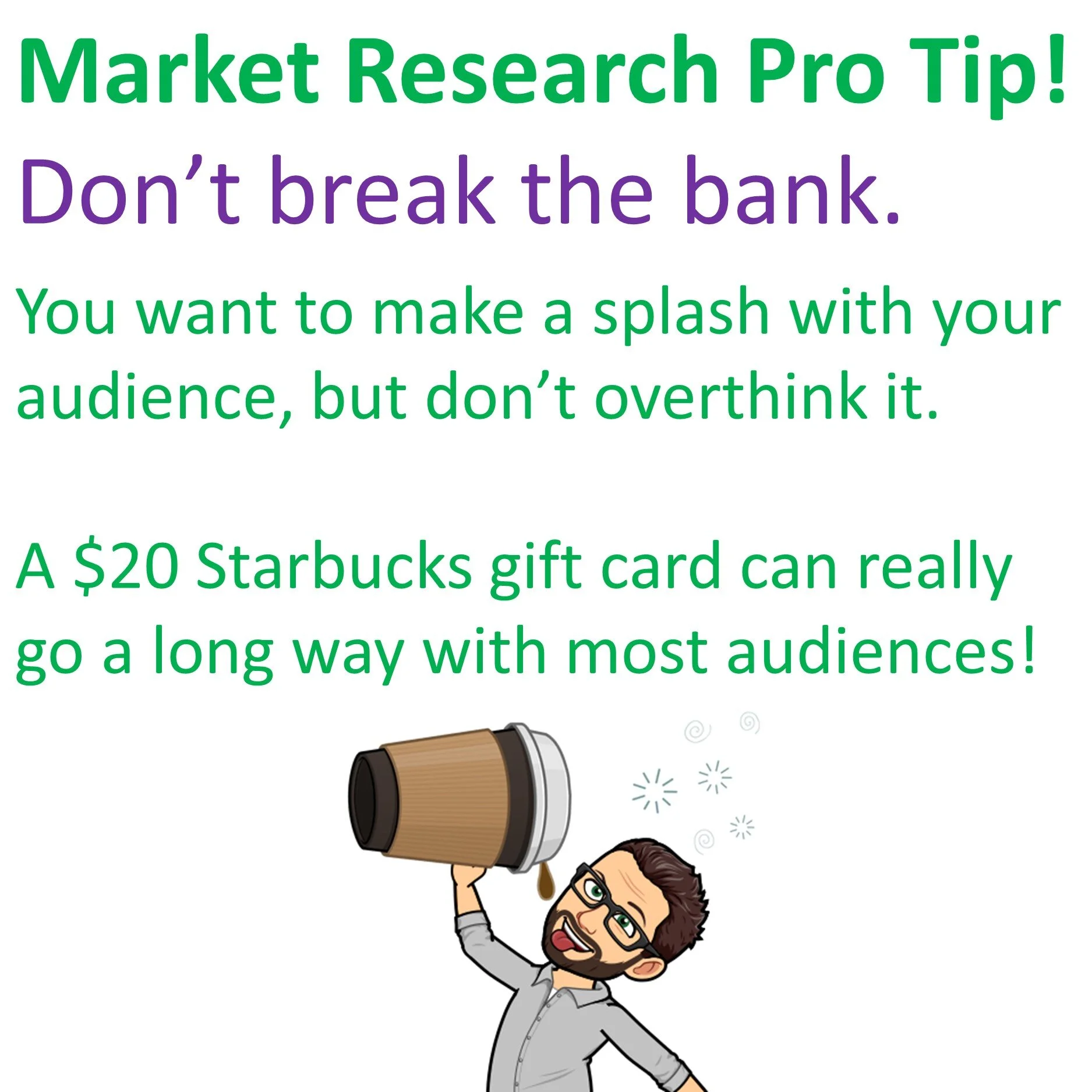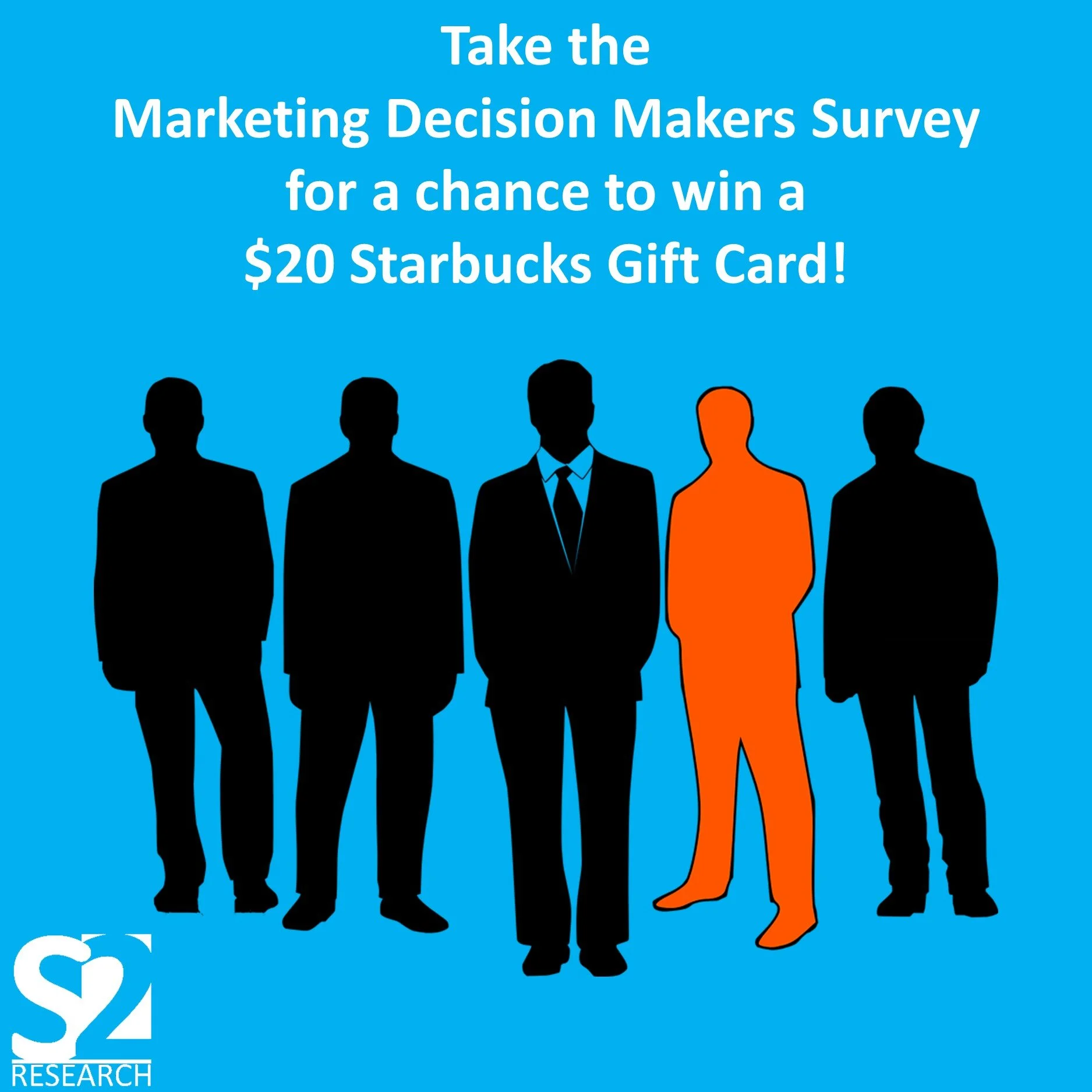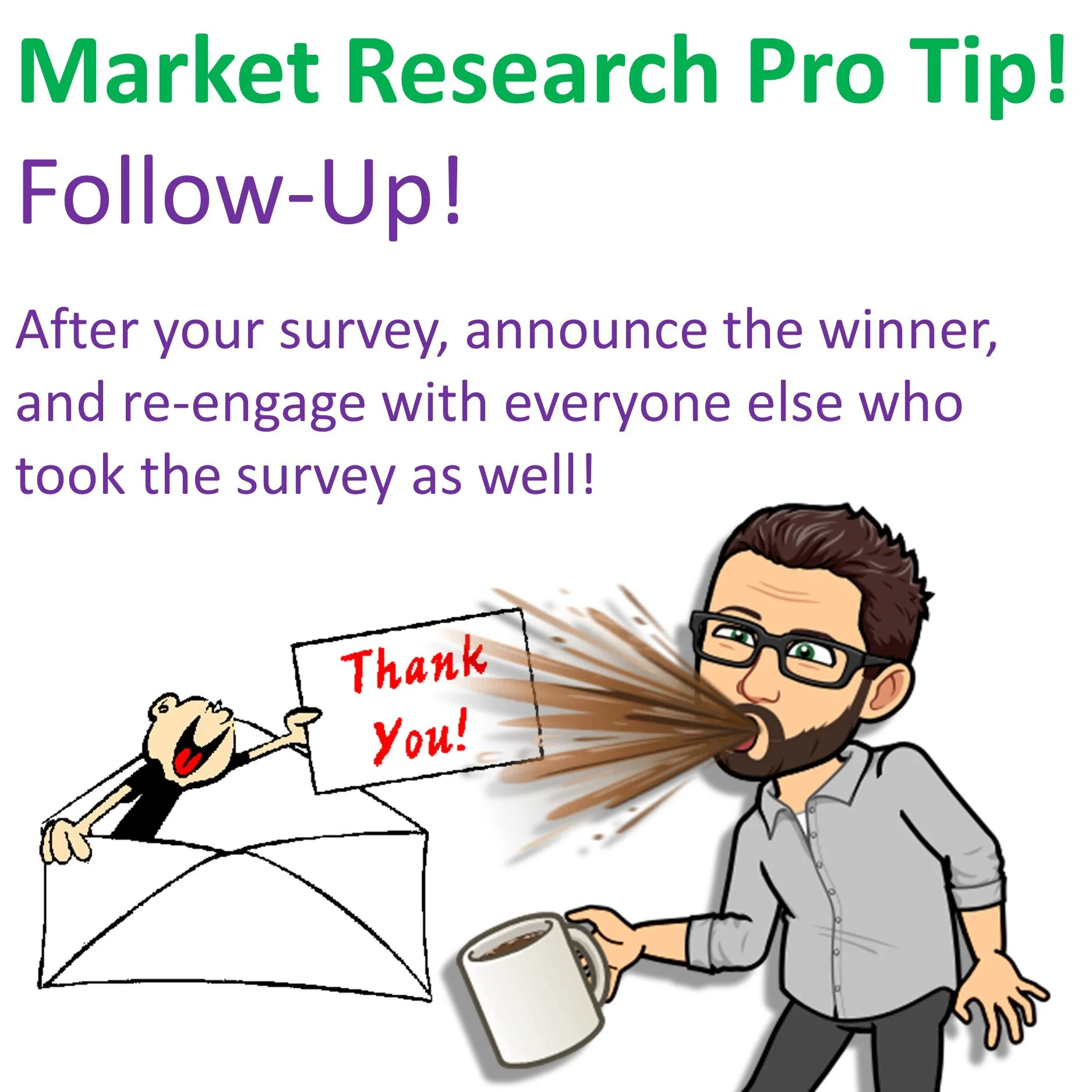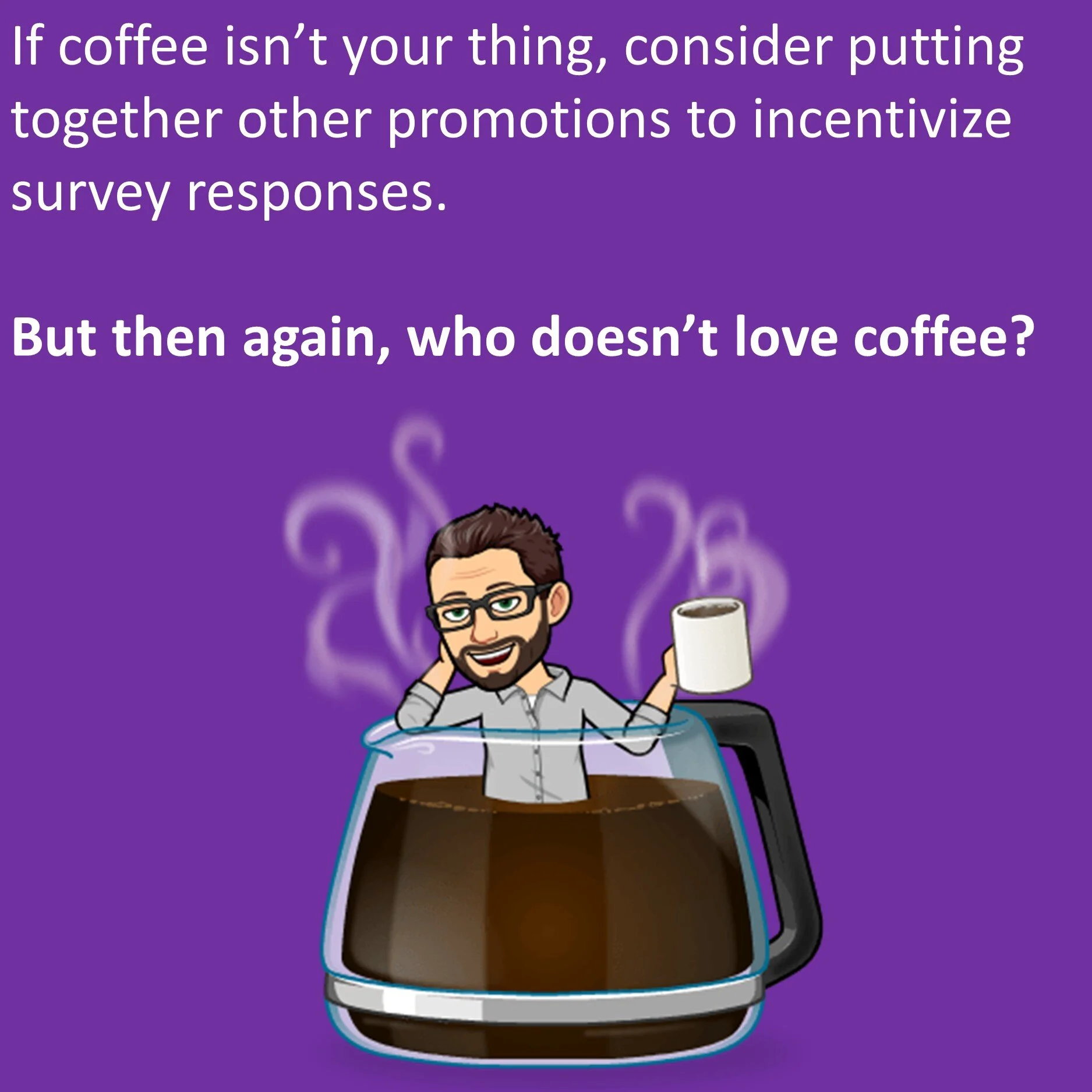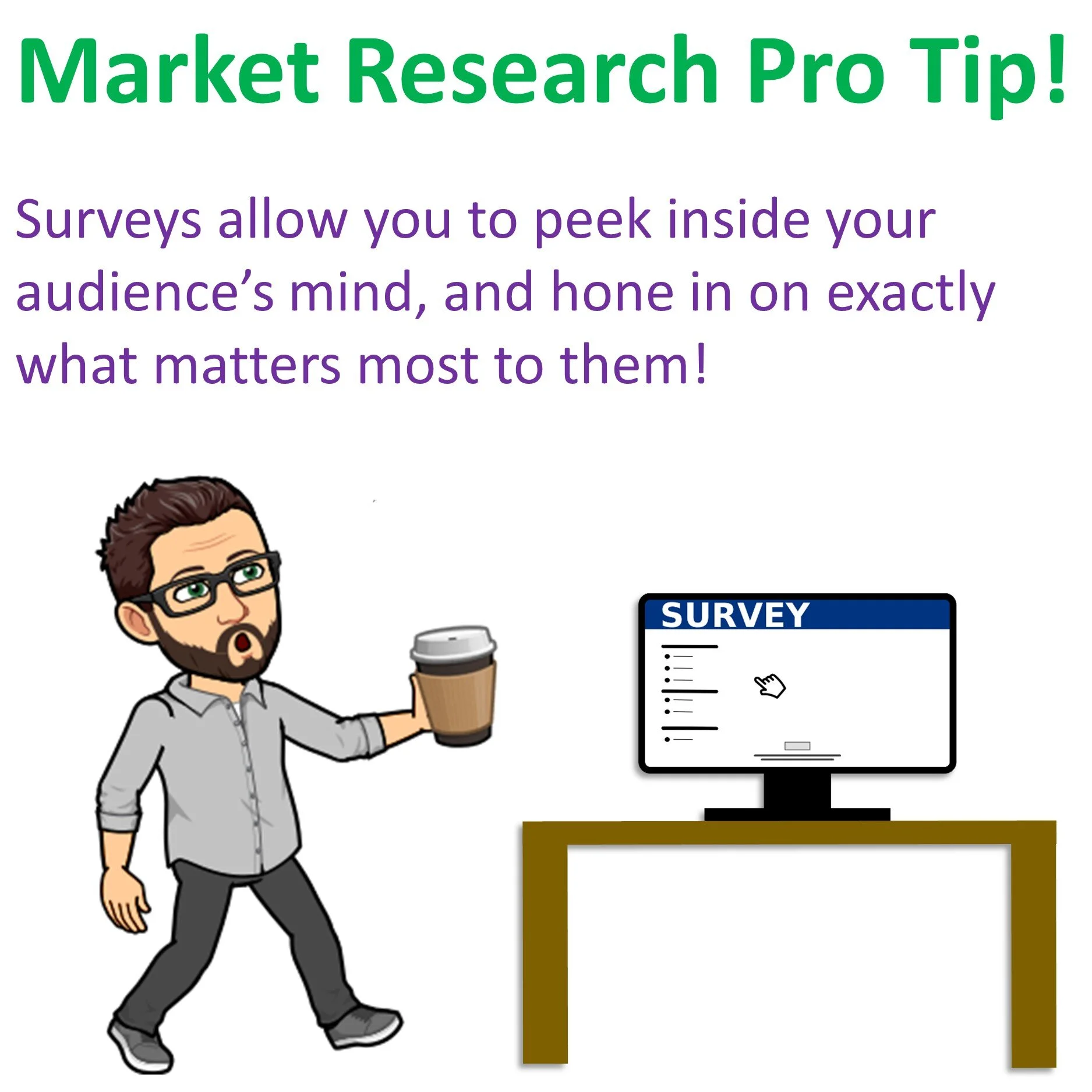There’s a reason surveys are one of the fundamental facets of how to do market research the right way for marketing. Put simply, market research surveys let you look inside your audience’s mind, and figure out exactly what matters to make your marketing move them to action!
Despite this amazing resource, though, many still avoid surveys in their marketing strategy process – even among marketers who do a hefty amount of market research already!
So if surveys are so amazing, why, then, are so many marketers missing the magic of the market research survey in their marketing-mapping process? Well, in my experience, it’s usually due to one of two reasons:
Market research surveys are too expensive.
Market research surveys are too slow.
See, the challenge with market research surveys is that they require responses to make them work. You need many people to take your survey, and especially if you’re doing a quantitative analysis of any kind, you need a whole heck of a lot of those responses to be able to make good marketing judgment calls.
Some quick facts about how to do market research surveys with panels.
The market research industry has solved this challenge a number of ways. Most notably with survey panels.
For those not in the know, panels are giant databases of people – specifically, the people you want to speak to. Whether it’s B2B marketing managers meandering through the Midwest, or common-income consumers who consume carbonated beverages in Connecticut, you can guarantee they have access to just who you want to speak to. Along with many many others, of course, but they have the filter option.
The challenge with panels is their costs. In this process, you’re literally paying each respondent money to complete your survey. As you can imagine, that can get up there! SurveyMonkey is currently pioneering a solution to the panel cost challenge right now, which is pretty cool! But in general, collection often costs a lot.
What’s amazing about survey panels, though, is their effectiveness. If you have a marketing question you need answered fast, or if you want to dive deep into an audience to really know what makes them tick, there’s no question a panel is the way to get things done!
Especially if you have a long survey, panels help you really learn everything you need to know about a marketing audience.
What’s the other option? Taking advantage of people and numbers.
If your marketing budget doesn’t allow for panels, the best way to get responses is to ask for them.
Many companies already take advantage of the fact that a small number of their customers are willing to complete a short survey. Maybe it’s an F&B brand with a survey code on their receipt, or even an in-person kiosk standing outside the restroom asking “how did we do?”.
But how does it work if you’re not talking your customers every day?
Well, if you have a customer database, you can email them! You can also post a survey link on your social media channels, reach out to your target customers on LinkedIn, and even post some digital ads asking for help.
If you’re thinking that response rate sounds super low, you’re correct! This methodology, while huge on cost-saving, also means you’re not going to get very many responses overall. And if you’re trying to hit a certain number of total survey responses, the numbers game means it’s going to take a while to get the project done!
That’s the challenge of this method. Yup, it’s super cost-saving, but it’s also slow. In fact, if you’re trying to hit a viable sample size with this method, it can sometimes take weeks or even months to hit something that matters!
So what can you do to solve this challenge? Like most obstacles in this world, I suggest turning to coffee for help.
The power of the Starbucks gift card in market research.
This is going to be a shocking revelation, but here it comes: people like coffee. And that number goes way up if ‘coffee’ can also mean an amazing Amazonian aromatic tea, or even a mouthwatering milkshake with optional coffee add-shot.
And when you add the power of coffee, combined with just a small ounce of luck and chance, your ability to garner survey responses goes up as well.
You’ve probably seen this before, but it’s time to truly leverage this secret market research trick. By adding a coffee gift card giveaway to your project, you will get more responses. It’s really that simple.
And when you’re working with a tighter market research or marketing budget, adding this tool is an excellent way to increase your survey response rate and effectiveness without overly breaking the bank.
How to incorporate the gift card process into your next survey.
If you’re thinking about doing a market research survey and sending it to your existing audiences, adding a Starbucks gift card can be a powerful tool to get more people involved!
First off, plan on doing a drawing. Make sure your strategy involves keeping track of all respondents by name and email (or phone), with the intent being to choose one or a few lucky respondents to receive the prize(s).
Don’t worry about keeping things anonymous. Sure, great market research surveys often encourage anonymity, but here we’re going to take advantage of including a contact form at the end of your survey.
Make sure this is an optional question, and spell out that respondents must complete this question to be entered into the drawing.
From there, include the gift card drawing in all of the promotional materials for your survey.
If you’re doing social adds or posts, be sure to highlight the drawing in your content.
If you’re sending emails or LinkedIn messages, take the time to spell out the drawing’s inclusion in the body copy.
If you’re posting a public sign at your storefront or event, print the drawing information in big bold type.
Ensure that every touchpoint of your survey marketing approach includes the coffee gift card drawing, and watch as many more people become engaged with your survey.
Keep it short.
A quick note on surveys of this nature – you must keep them short.
For most respondents, especially those on a cold email case, donating more than a few minutes of time is difficult to justify. This is somewhat less true with the Starbucks gift card approach, but regardless, if you’re asking people for their time to take a survey, you can only ask for a very little amount.
What does this mean for your survey? Follow these rules to keep yourself in the safe zone!
Keep it under 5 minutes. The shorter from there, the better!
Fine-tune on your most pressing issues. Don’t ask a question if the answer doesn’t matter to your marketing.
Only include a few demographic data-points. Keep the ‘who are you?’ relevant to your marketing opportunities.
Be sure to communicate the length of the survey up-front in your communication so people know what they’re getting into as well.
Also, be honest about that up-front time communication. If you say your survey is 3 minutes long and it actually goes to 6, most respondents will just leave. Worse yet, they’ll just ‘start clicking’ to get through the survey, and your data will be no good. And worser still, their opinion of you and your brand might be negatively impacted.
How much should the gift card be?
As a market research partner who helps guide marketers through the research process, I get the ‘how much should we spend on the gift card?’ question a lot.
The short answer, whatever you think will make your audience take notice.
Like anything in this world, you need to take into account how your audience views, well, everything, and incorporate those insights into your planning process.
And what is an insight in this context? For starters, you could consider how much your audience already spends on coffee every day/week/month, and also how much they spend on everything else as well. Their income and affinity are going to play a major role in this decision.
That said, don’t over-think it. Like I said, everyone loves coffee, and games of chance and luck don’t hurt either. Make sure you make a splash, but don’t worry about breaking the bank. A $20 Starbucks gift card can really go a long way!
Check out my current experiment!
I’m actually running an experiment survey right now that does include a $20 Starbucks gift card giveaway. While I’m not doing this experiment in any kind of scientific way, I will have some good data-points that will help us better understand how the gift card impacts response rate.
I currently have a survey of marketing decision-makers in the field. Using a combination of methods including email marketing and LinkedIn outreach, I’m promoting the survey to marketing decision makers within in-house teams all across the countries, in industries ranging from hospitality to healthcare to food & beverage.
As of this writing, we’re looking at about a double response rate compared to similar collection methods I’ve used without the gift card encouragement.
I can’t wait to share the results in a few weeks!
Be honest.
I feel like I just need to say it – you must give away a gift card when the project is done. If you have announced there will be a winner, and a prize, there’s no getting around it. You need to pick a winner at random and make sure they get the card. And if they don’t, pick another winner.
If you don’t fulfill the promise, in some way shape or form it could tarnish your reputation. In marketing, and in life, there just isn’t room for that.
Also, if you have an in-house legal department, feel free to loop them in on the drawing too, and even feel free to link to a separate document with terms and conditions!
Announce and say thank you!
Like the importance of being honest, be sure to make a big deal out of announcing a winner. Send a follow-up email congratulating that one lucky individual, and be sure to thank everyone else for participating.
Want to make the most of it? Since you’re probably touching base with a significant portion of your audience anyways, why not offer a consolation prize to those who didn’t win? It could be a free product or service from your company, or even a piece of great content marketing if you have it available.
Make a big deal about the wrap-up of your survey, and be sure to treat it as a great client and customer engagement tool as well!
Does it have to be coffee?
In my biased viewpoint, everything should be about coffee. But in reality, no, drawings do not need to be about coffee exclusively.
If you have a great product, you can give that away as well. You can also do restaurant gift cards, Amazon gift cards – really, anything your heart desires.
A few rules to follow, though, when thinking about coffee alternatives:
Make sure it’s something that really matters to your survey audience.
Make sure it’s something the entire audience can use. Global and online brands are great at solving this challenge. Meanwhile if you’re promo involves a local restaurant, you can’t survey out-of-state.
Avoid cash. Cash is impersonal, and brings a connotation to the survey discussion that can alter how the project goes.
Want to really mix it up? Consider adding multiple prizes. Avoid doing tears, and instead offer “five” $20 Starbucks gift cards, for instance, to “five” lucky winners. Make a big deal about the five, and let your audience’s imaginations run wild as they mathematically calculate their odds of winning!
How many responses is enough?
Book suggestion!
If you want to learn more about why the Starbucks gift card is a great motivator, I recommend Daniel Pink’s book Drive! This was an amazing read about what motivates people and moves them to action!
The goal of the gift card strategy is to increase responses, because with enough responses to a survey you can statistically know how an audience really feels about a specific topic.
Better yet, with even more survey responses, you can ‘cut’ your data – also known as cross-tabbing – to identify even more refined audiences within your total survey set, which can really supercharge your marketing.
So how many is enough? Really, that’s a difficult question to answer.
To truly get the benefit of big audiences and cross-tabulation, you need at least a few hundred responses. This helps avoid statistical anomalies screwing with your findings.
But sometimes even with a gift card inclusion, it’s just difficult to get enough responses to get statistics involved. In those cases, consider building a survey that’s more qualitative in nature, with greater audience deep-dives through open-ended questions.
Define your overall marketing goals before starting the survey, as well as the feasibility for you to achieve the right survey result counts through your existing resources, and let the answers to those questions guide your target response rate.
Why surveys for marketing and market research anyways?
I know I glossed over it in this article, but I wanted to make sure to at least touch on why market research surveys are such a vital part of how to do market research the right way.
Surveys allow you to peek inside your audience’s mind, and hone in on exactly what matters most to them in their relationship with your company, brand, product or service.
Survey can help you understand buying habits and pain points.
Surveys are a fantastic way for small businesses to better refine their marketing programs.
Surveys are a great way to measure customer satisfaction and even set specific marketing KPIs.
Surveys can even help you understand how your audience is thinking about current world challenges!
Bottom line, surveys are the answer to several specific questions about your audience. And they’re a very important tool in the marketers’ toolbox!
Use this power wisely!
Market research surveys work when you have responses to them, and asking people for responses is how you get there.
When you add in a powerful incentive, like the all-mighty Starbucks Gift Card Giveaway, your response rate can get you to exactly where you need to go.
Consider this tactic the next time you’re mapping out a marketing and market research project!






